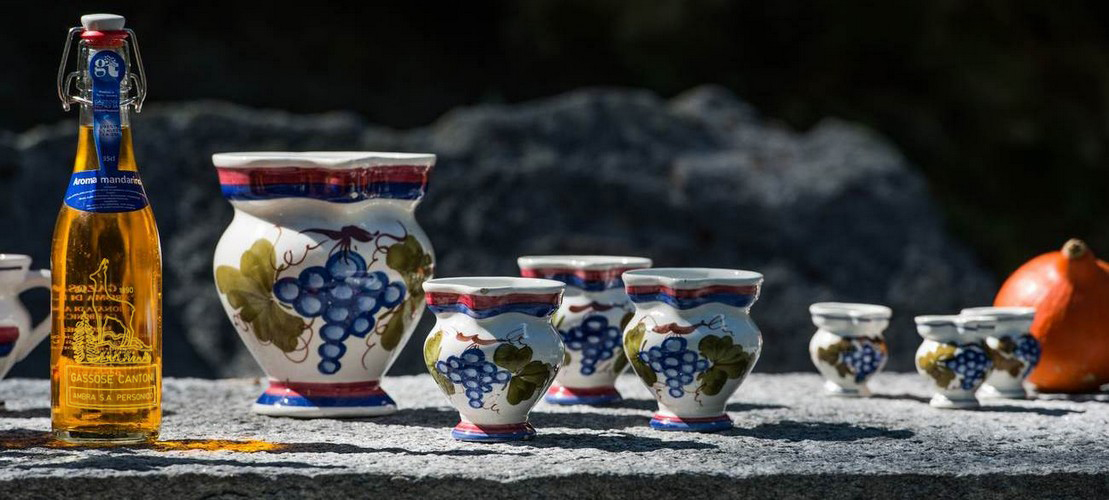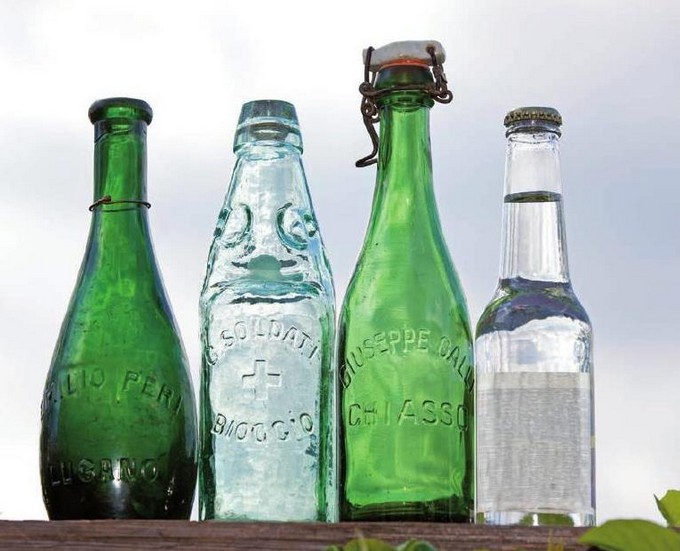
Gazzosa, also called gazosa, gassosa o gaesosa, is a sweetened, flavored and slightly carbonated water, whose name comes from its own feature, the gas.
In the past - as fizzy, flavored and consumed on special occasions - it was called "The poor man's Champagne", because of the bubbles, reminiscent of Champagne.
A peculiarity of the gazzosa is the packaging. It first began with a green, potbellied glass bottle, closed with a cork stopper fixed with iron wire, as for Champagne.
Then they invented a thick white glass bottle containing a glass marble, which gave its name to another denomination for gazzosa: "champagne da la baleta" (literally “Champagne of the marble”). The bottles were filled upside down, and pressure of the gas in the bottle forced the marble against the washer, sealing in the carbonation. This bottle is over a hundred years old. Its inventor, British soft drink maker Hiram Codd designed and patented it for carbonated drinks in 1872. To open it, it was enough to press with your finger to release some gas and the marble would come down, so that the liquid could come out and quench the thirst.
However, this system was banned in 1940 due to hygiene reasons and from that moment on the 35cl-bottle we know was used, closed with flip-top cap. Today the producers of gazzosa have mostly a more industrial manufacturing and choose to add carbonic acid to fruit syrup. In some Ticino and Mesocco families, however, the tradition of natural fermentation is maintained.

The crystal-clear soft drink, colored or clear, has its own unique recipe, handed down from generation to generation. From the evidence collected, since the nineteenth century until the last decades of the twentieth there has been a special way to prepare gazzosa in Ticino, now abandoned: to obtain gas through the natural fermentation of a sweetened liquid, a syrup flavored with herbs (thyme, lavender, elder, lime, sage), or made of lemon, various flavors and water; it was then exposed to the sun to naturally carry out the fermentation process, the same method is also used with grape must or apple must.
The retro design, the sparkling, unmistakable taste. Bubbles without alcohol. While it refreshes and quenches thirst, it evokes memories: of childhood, of grottos( local taverns), of ancient recipes, of sunny summers, of holidays, of beautiful days spent in the south of the Alps.
In the grottos you can drink in a red and blue cup or jug, often mixed with a Merlot (mixture called “mèz e mèz”, or “lù e lè”).
A symbol of sobriety and health, the gazzosa is part of the Swiss culinary heritage.



